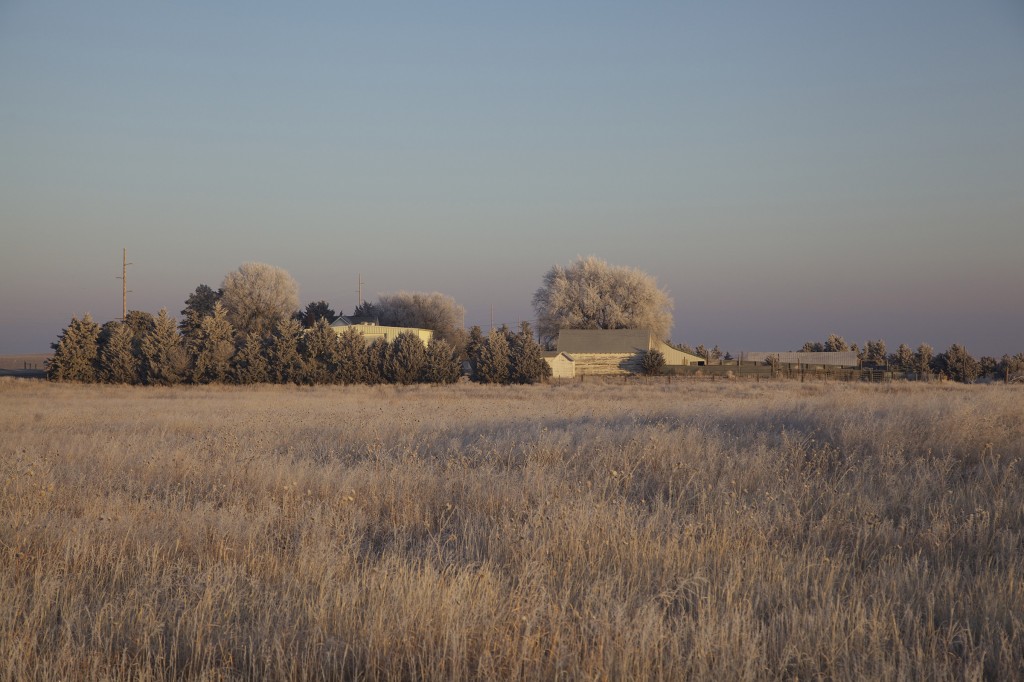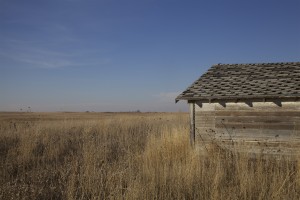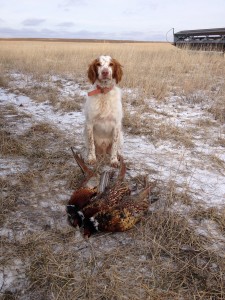 Congress continues to bleed America’s most important conservation program
Congress continues to bleed America’s most important conservation program
WELL, AFTER MORE THAN THREE YEARS OF DEBATE AND CLOAKROOM POLITICS, WE FINALLY HAVE A NEW FEDERAL FARM BILL. The scope of the programs it authorizes is almost beyond imagining. So is the cost: around $960 billion between now and 2023.[i]
Most of the angst over the bill has focused on the Supplementary Nutrition Assistance Program (SNAP) and various subsidies to farmers, particularly direct payments to farmers who raise certain crops, whether the prices for those crops are high or low, and special treatment for commodities like milk and sugar. Largely lost in the discussion has been Title II of the 2014 farm bill, the section that defines most of the federal conservation programs that apply to farmland.
Several of the conservation groups who lobby Congress on these matters have expressed general satisfaction with the outcome of the extended negotiations over the farm bill and with good cause, I guess— the damage to the conservation title could have been much worse. Various farm interests were interested in getting rid of Sodsaver, the provision that gives grasslands some measure of protection by limiting farm subsidies for any farmer who plows native prairie. Conservation groups managed to keep Sodsaver.
A farmer who wants to take advantage of the massive subsidies in the new crop insurance program has to comply with the provisions of the conservation plan he and the Natural Resources Conservation Service design for his property. Some farm interests didn’t want that provision, but they got it anyway.
And the crown jewel of the farm bill’s conservation title— the Conservation Reserve Program (CRP)— wasn’t killed in the crossfire over food stamps between liberals and Tea Baggers. That’s something.
The conservation lobbyists who negotiated these concessions worked miracles in a Congress that would rather feud than breathe. At this point, they have little choice but to make their peace with the final outcome and get on with life.
But you’ll pardon me if I’m more than a little dismayed at the outcome. We’ve been compromising on the farm conservation programs ever since the 1985 farm bill became law. That was the bill that created CRP, a provision that paid farmers to plant permanent cover on highly erodible cropland and leave it for ten to fifteen years. In some cases, the ten-year payment was as much as the price of the land itself, but conservationists didn’t complain because the cover drastically reduced soil erosion, improved water quality, and provided habitat for a spectrum of wildlife species, many of which had been suffering long-term declines before CRP was launched.
City and country, farmer and urbanite, everybody got something out of CRP, but even in that first bill, there was a substantial compromise: With permission from the Department of Agriculture, farmers could hay or graze their CRP land during a severe drought. That reduced the protection from erosion CRP provided and nearly eliminated residual wildlife food and cover when wildlife needed them most. It was a huge compromise, but the conservation community accepted it as a necessary step in gaining important protection for farmland and wildlife.
We’ve been compromising ever since. The 1985 farm bill set a ceiling of 45 million acres for CRP.[ii] In 1996, the ceiling was reduced to 36.4 million acres.[iii] In 2008, it was reduced again, this time to 32 million acres.[iv] And the 2014 farm bill reduces the ceiling again— now, it’s 24 million acres, barely half the original target for CRP.[v]
reduced to 36.4 million acres.[iii] In 2008, it was reduced again, this time to 32 million acres.[iv] And the 2014 farm bill reduces the ceiling again— now, it’s 24 million acres, barely half the original target for CRP.[v]
As the ceiling has been lowered, the number of acres in CRP has declined. In 2007, we had 36.7 million acres in CRP; in 2013, we were down to 26.8 million acres.[vi] Some of this drop was the result of record high prices for corn, soybeans, and wheat— faced with a choice between CRP rental payments and the income from a corn crop at $8 a bushel, many farmers let their CRP contracts expire and got on the tractor— but there’s little doubt that the reduced CRP ceiling has played a major role in the loss of CRP acres across the farm landscape.
I suppose it could have been worse— there was at least one proposal in the House of Representatives to slash the budget for CRP, even though the program has what’s known as “mandatory funding” under the farm bill. The attempt to reduce CRP appropriations failed, but between 2003 and 2010, similar efforts cut $7.5 billion in funding for other programs in the farm bill’s conservation title. More compromises . . .
So the suits in Washington have made their deals and held their news conferences, and the conservation title of the farm bill has once again suffered the consequences. What do we in the real world stand to lose as a result?
Well, there’s the topsoil, of course. CRP began as a program to tack down highly erodible fields, and it has had marked success in achieving that goal. In 1982 before the advent of the modern farm bill, croplands were losing 7.3 tons of soil per acre every year. That was something like 3,061,000,000 tons of topsoil down the river or into the sky. Every year.[vii]
In 2007, that loss had dropped to 4.8 tons per acres, a 43-percent reduction in soil loss.[viii] Some of this reduction is undoubtedly due to new minimum-till farming techniques, but a large part is the result of cover crops planted on CRP acres.
As human population moves toward 500 million in the United States and 9 billion or more in the world, we may well find that the most important single natural resource we have in America is our topsoil. It would a good idea to hold onto as much of it as we can.
Holding soil in place also means better water and air quality. Researchers at the University of Missouri estimate that CRP cover hold 259 million tons of nitrogen, 56 million tons of phosphorus, and 23 million tons of organic carbon on the land instead of allowing them to leach into waterways.[ix] This not only improves the fertility of the land but reduces pollution and eutrophication in the water. The researchers also estimate that CRP keeps 335 million tons of dust out of the air.
These days, a growing number of people (including me) are worried about the continued build-up of greenhouse gases in the atmosphere. A significant part of the conversation about saving ourselves from being roasted alive has been the idea of somehow trapping carbon dioxide underground. The coal industry and other business interests are looking for high-tech ways of removing CO2 from the air and pumping it thousands of feet below the surface of the earth, where they hope it will stay.
There’s an easier way—just fund more CRP. Researchers in Michigan studied a field that was being returned to a corn-soybean rotation after twenty-two years in CRP. In the first year after the field had been replanted, they found that the soil released 6.4 tons of carbon dioxide and nitrogen oxide per acre. They estimated that the field would release another 21.9 tons of greenhouse gases per acre over the next several years until some sort of equilibrium was reached.[x]
It’s been estimated that, at its peak area in 2007, CRP locked up 84 million tons of carbon dioxide in a single year.[xi] If the Department of Agriculture manages to meet the ceiling in the new farm bill, we’ll see a thirty-four-percent reduction from the 2007 acreage of CRP—plowing thirteen million acres will release millions of tons of carbon into the atmosphere and cripple one of the best sequestration systems we have.
And farm wildlife will take a beating. CRP hasn’t been a boon for every wild animal on the agricultural landscape— no single approach to habitat can provide all things to all wildlife— but the net effect has been overwhelmingly positive. At least one species, the tiny Henslow’s sparrow, might very well be listed as threatened by now if it hadn’t been for the advent of CRP. Prairie ducks have prospered in the CRP era, as have prairie sharp-tailed grouse and several species of songbirds.
The coming of CRP revived the Midwest’s populations of ring-necked pheasants as well. In 1986, hunters in South Dakota, long the heart of pheasant country, had bagged just over 600,000 birds; in 1991, five years after the CRP program was launched, the harvest doubled to 1.2 million. Iowa, another mecca for pheasant hunters, reported a harvest of just over 800,000 roosters in 1986; just three years later, hunters took more than 1.4 million, thanks to a year of gentle weather and nearly 2 million acres of new CRP cover.
the heart of pheasant country, had bagged just over 600,000 birds; in 1991, five years after the CRP program was launched, the harvest doubled to 1.2 million. Iowa, another mecca for pheasant hunters, reported a harvest of just over 800,000 roosters in 1986; just three years later, hunters took more than 1.4 million, thanks to a year of gentle weather and nearly 2 million acres of new CRP cover.
The decline of CRP over the last seven years has had the opposite effect across the pheasant’s current range. Here’s a quick look at the change in Midwestern pheasant harvest since 2007:
2007 2012
Iowa 600,000 158,000
Nebraska 480,000 198,000
Kansas 383,000 234,000
Minnesota 655,000 290,000
South Dakota 2,100,000 1,428,000
North Dakota 907,000 650,000
Much of this drop has been caused by stunningly bad weather over the last five years— extended drought on the central plains, a succession of horrific winters and/or spring deluges in Iowa and parts of Minnesota. Still, good habitat is a shock absorber. It can’t eliminate the effects of a bad year, but it does minimize them, and it accelerates the recovery once the weather improves. The Midwest’s prime pheasant states have lost nearly 8 million acres of CRP since 2007, which leaves pheasants and most other wildlife exposed to the full impacts of whatever cold front happens to blow through.
No one who knows anything about pheasants is surprised by the effect of this deepening habitat loss. Saddened but not surprised.
Pheasant populations are more carefully followed than the numbers of any other bird in farm country. If a bird as tough as the ringneck is struggling, it’s almost certain that sharptails, prairie chickens, and prairie ducks will follow. That’s bad news for hunters and bird enthusiasts, of course, but it’s also horrible news for local economies. In 2012, pheasant hunters spent $172 million in South Dakota alone[xii]. As recently as a decade ago, pheasants supported an industry worth half a billion dollars in the upper Midwest, an income stream that was produced almost accidentally by a conservation program designed to protect soil and bolster crop prices.
ringneck is struggling, it’s almost certain that sharptails, prairie chickens, and prairie ducks will follow. That’s bad news for hunters and bird enthusiasts, of course, but it’s also horrible news for local economies. In 2012, pheasant hunters spent $172 million in South Dakota alone[xii]. As recently as a decade ago, pheasants supported an industry worth half a billion dollars in the upper Midwest, an income stream that was produced almost accidentally by a conservation program designed to protect soil and bolster crop prices.
The boys in Washington are desperate to cut federal spending— I get that. And like most Americans, I support the idea of a balanced budget. But if we’re going to cut costs, it seems sensible to cut programs that don’t work very well, don’t serve many of our citizens, or both. CRP and several of the other programs in the conservation title of the farm bill deliver a spectrum of important benefits to nearly every American: They save precious topsoil, help support prices of grains and other farm commodities, clean our water and air, trap carbon dioxide and other greenhouse gases, keep rare wildlife species off the federal list of threatened and endangered species, provide recreation, and inject income into rural economies.
And they accomplish all these things at a surprisingly modest cost.
The farm bill as a whole is breathtakingly expensive, but it’s important to remember that eighty percent of that amount pays for food stamps and other nutritional programs. Another nine percent goes for subsidies on crop insurance (more on that in a minute), and another five percent for a variety of crop subsidies.
Only six percent of the farm bill budget is spent on conservation programs, most of it on CRP, and over the next ten years, the new federal farm program will cut more than $3.3 billion in CRP funding. Meanwhile, the cost of our subsidies to farmers for crop insurance will go up by $5.7 billion.[xiii]
I think it’s appropriate for us, as taxpayers, to help farmers cope with some of the risks inherent in their business. Agriculture is one of the cornerstones of the American economy, and it’s likely to become even more important in the future. But, for the life of me, I can’t understand why we should offer a farmer support by underwriting his crop insurance. Those of us who live in town reap no benefit whatsoever from the insurance program.
The farm bill’s conservation programs offer a far better conduit for support. Participating farmers receive a guaranteed income, regardless of flood, drought, or hail, and at the same time, the nation as a whole gets cleaner air and water, more productive topsoil, more wildlife, and a step toward heading off climate change. Everybody wins.
I’m tired of paying for the backroom deals while I watch compromise after compromise erode the parts of the farm bill I want most. Congress tries to pass a farm bill every five years or so, which means that, before the issue heats up again, Americans have three years to think about what we really want for the trillion dollars we’ll spend on the next farm bill.
It’s time to move the debate out of the backroom. And quit compromising.
Literature cited
[i] Congressional Budget Office, January 28, 2014. Letter to Congressman Frank D. Lucas. Estimated Budgetary Effects of H.R. 2642, the Agricultural Act of 2014. http://www.cbo.gov/sites/default/files/cbofiles/attachments/hr2642LucasLtr.pdf
[ii] Public Law 99-198, 1985. Food Security Act of 1985. http://history.nih.gov/research/downloads/PL99-198.pdf
[iii] Public Law 104-127, 1996. Federal Agriculture Improvement and Reform Act of 1996. http://www.gpo.gov/fdsys/pkg/PLAW-104publ127/pdf/PLAW-104publ127.pdf
[iv] Public Law 110-246. Farm, Conservation, and Energy Act of 2008. http://www.gpo.gov/fdsys/pkg/PLAW-110publ246/pdf/PLAW-110publ246.pdf
[v] H.R. 2642, 2014. Federal Agriculture Reform and Risk Management Act of 2013. http://www.gpo.gov/fdsys/pkg/BILLS-113hr2642eh/pdf/BILLS-113hr2642eh.pdf
[vi] Farm Service Agency, U.S. Department of Agriculture. Conservation Programs Web page. http://www.fsa.usda.gov/FSA/webapp?area=home&subject=copr&topic=rns-css
[vii] USDA, Natural Resources Conservation Service, 2007 National Resources Inventory. National Soil Erosion Results Table. http://www.nrcs.usda.gov/wps/portal/nrcs/detail/national/technical/nra/nri/results/?cid=stelprdb1041678
[viii] ibid.
[ix] Food and Agricultural Policy Research Institute, University of Missouri, Columbia, MO, 2007. Estimating Water Quality, Air Quality, and Soil Carbon Benefits of the Conservation Reserve Program. FAPRI-UMC Report 01-07. http://swat.tamu.edu/media/1331/fapri_umc_report_01_07.pdf
[x] Gelfand, Ilya, et al., 2011. Carbon debt of Conservation Reserve Program (CRP) grasslands converted to bioenergy production. Proceedings of the National Academy of Sciences 108(3): 13864-13869. www.pnas.org/cgi/doi/10.1073/pnas.1017277108
[xi] p. 31. Food and Agricultural Policy Research Institute, University of Missouri, Columbia, MO, 2007. Estimating Water Quality, Air Quality, and Soil Carbon Benefits of the Conservation Reserve Program. FAPRI-UMC Report 01-07. http://swat.tamu.edu/media/1331/fapri_umc_report_01_07.pdf
[xii] South Dakota Game, Fish & Parks, 2013. Pheasant Economics. http://gfp.sd.gov/hunting/small-game/pheasant-economics.aspx
[xiii] Congressional Budget Office, 2014. Letter the Honorable Frank D. Lucas, estimating the effects of direct spending and revenues of the conference agreement on H.R. 2642, the Agricultural Act of 2014. http://www.cbo.gov/publication/45049
Leave a Reply
You must be logged in to post a comment.